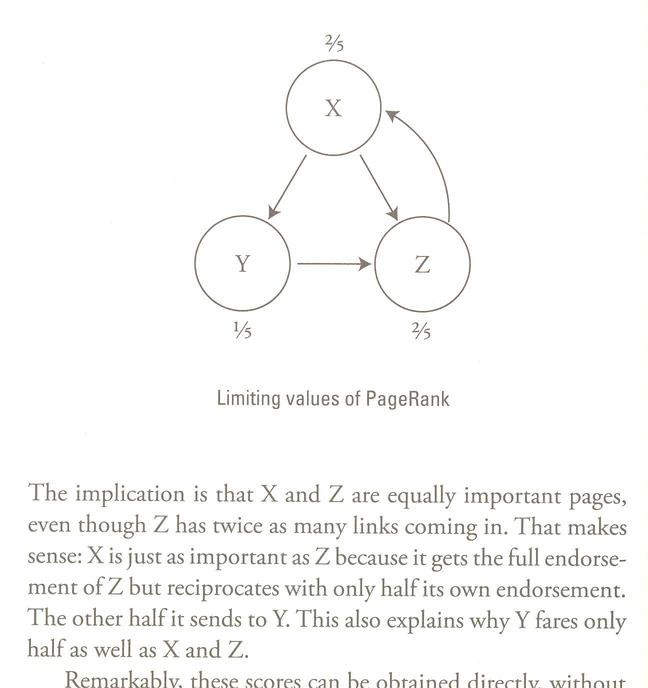- Please continue getting me electronic versions of your papers. Thanks to those who've
gotten them to me.
Most recently please revise your five questions, and send them back so that I can post those.
- I'm returning your homework on simple graphs on five vertices.
- All simple
graphs with four vertices can be considered simple graphs on five vertices, as well. These are all subgraphs.
- All simple graphs with five vertices, organized using the concept of duality.
- All simple
graphs with four vertices can be considered simple graphs on five vertices, as well. These are all subgraphs.
Question of the Day:
- Definition of a graph: a graph is
- a collection of vertices,
- a collection of edges, and
- a set of rules, one for each edge, telling how each edge is connected to its pair of vertices.
- Some properties of graphs:
- The degree of a vertex is the number of edges
coming into it.
- Graphs don't change by bending edges, but breaking them or
detaching edges from their vertices (and hence creating new vertices)
gives new graphs. We can move vertices around, rotate graphs, etc. --
so long as we don't change their connectivity, it's the same graph.
- Last time we focused on simple graphs: a graph is simple if
it doesn't have any loops (edges connected from a vertix to itself), or
multiple edges with the same two vertices.
- Complete graphs are simply graphs with connections between
every pair of vertices (but no loops).
- Duality allows us to simplify our work. One graph is dual to
another if the two have no edges in common, but combine to form the
complete graph. They complement each other perfectly.
To find the dual $\overline{G}$ of a graph $G$, use the following scheme:
- Draw the vertices of the graph $G$.
- If two vertices in $G$ are unconnected, connect them in $\overline{G}$.
- If two vertices in $G$ are connected, don't connect them in $\overline{G}$.
- Planar graphs are graphs that can be drawn such that no two edges
intersect.
- The degree of a vertex is the number of edges
coming into it.
- We'll start today with an exercise to review a little, and talk
again about Pascal's Triangle.
- We may find ourselves using graphs to understand the social
dynamics of Newport. We might start by considering adjacency in
Newport. Each block group is a vertex, and an edge exists between
vertices if they are adjacent.
Last time we considered an unusual application of graphs to the study of social dynamics -- in particular to decide when social situations are stable.
- Now we turn to Google.... Chapter 24: Untangling the Web (directed graphs) -- p. 191.
This section describes how Google uses the "Pagerank" algorithm to determine the importance or value of a webpage (and hence where it falls in the search results for a particular topic).
Strogatz asserts that "A page is good if good pages link to it," then discusses this self-referential definition of a good page. (p. 193)
The question is this: who decides which pages are good in the first place? As Strogatz describes, the network does!
"Worrying about content turned out to be an impractical way to rank webpages." (p. 192) We left people vote with their feet (or rather, with their clicks.)
Graphs provide a useful way of illustrating how pages interact. If there's a link between two pages, then a directed arrow indicates it. Here's the graph of the "toy web" Strogatz considers, with the final rankings:

He justifies this ranking in a series of graphs, and a set of equations on page 195. Let's see how these equations work (we'll use this Excel spreadsheet).
He starts by assigning all pages equal weight: in this case, if we call the total weight 1, each page starts with weight 1/3.
Notice that I've written the equations with an index,
, rather than with the primes. That's because we keep updating the values to get them at the
stage, and we update based on the previous stage's (
) values.
We just "do it again", over and over....
This "systems of equations" is an example from the field of mathematics called "linear algebra". If you loved algebra, wait -- there's more!:)
Now here's the big question: How do you improve the value of your website, given that you understand the PageRank algorithm?
Side note: Google's plan to prioritize facts ticks off climate deniers: The strategy isn't being implemented yet, but the paper presented a method for adapting algorithms such that they would generate a "Knowledge-Based Trust" score for every page. To do this, the algorithm would pick out statements and compare them with Google's Knowledge Vault, a database of facts. It would also attempt to assess the trustworthiness of sources -- for example, a reputable news site versus a newly created WordPress blog....